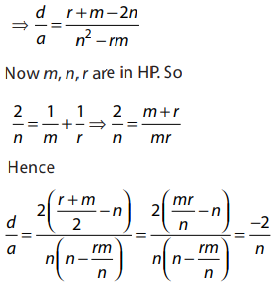Let a be the first term and d be the common difference of the AP. Let x, y, z be the (m + 1)th, (n + 1)th and (r + 1)th terms of the AP. Then x = a + md, y = a + nd and z = a + rd, since x, y, z are in GP. Therefore,
⇒ y2 = xz
⇒ (a + nd)2 = (a + rd) (a + md)
